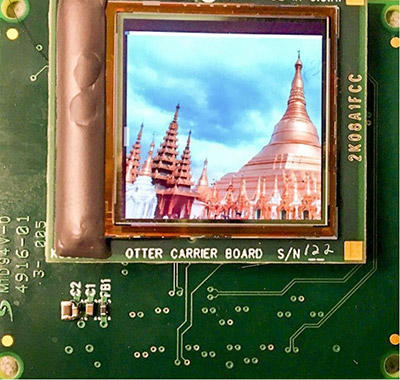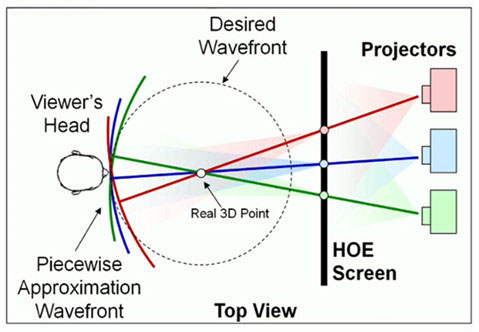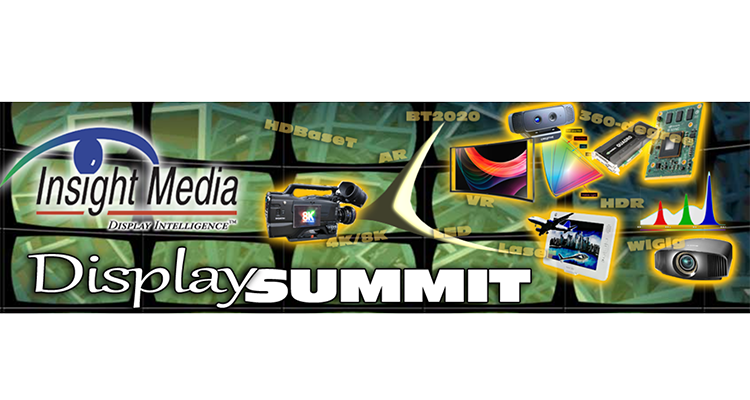Illumination Sources Top Opportunity List at Projection Summit
By Chris Chinnock, President, Insight Media
While there is concern about consumer rear-projection TVs, the professional side of the projection business is quite healthy. That was the consensus of analysts from Techno Systems Research, iSuppli and Pacific Media Associates, who all gave presentations at the sixth annual Projection Summit conference, held just prior to InfoComm. But perhaps the most interest centered around LEDs, lasers and electrodeless lamp sources, and the projection systems these will enable in the coming years.
High brightness LEDs, such as those offered by Luminus Devices, are already being used in rear-projection TVs from Samsung and in a soon-to-be released pocket projector from LG Electronics. This pocket projector should reach the critical threshold of 100 lumens, making it bright enough for real application in business and entertainment.
Remember, perceived brightness is on a logarithmic scale so, all things being equal, 1000 lumens is only twice, not ten times as bright as 100 lumens. This is the level that many other pocket projector makers are striving for and will likely achieve shortly.
An interesting point to make about brightness in the business environment is that higher lumen projectors are preferred not so much for their higher brightness levels per se, but for the higher contrast they create when the room lights are on. A 5000 lumen projector is brighter than a 1000 lumen projector, but the brightness increase is perceived less than the contrast increase, which gives the impression of a better image.
Therefore, coupling a 100 lumen projector to an ambient light rejecting screen can create an image with the same perceived image quality as a much higher lumen projector shining on a more standard screen. This was one aspect of the market that was discussed in the Light Rejecting Screen session at Projection Summit. Naturally, these benefits apply to projectors at all lumen levels, so adoption of light rejecting screens in many business applications could potentially reduce the need for higher lumen projectors, which would allow longer lived lamps to be used, which would lower operating costs for end users. It becomes a virtuous circle of benefits.
Also discussed were electrodeless lamps where the arc is created with microwave energy, instead of electrical current passing through electrodes. Burn back of the electrodes in a conventional UHP-type lamp is what accounts for much of the lifetime issues. Electrodeless lamp makers like Luxim have shown data for lamps lasting 25K hours — lamps that lose only 20% of their original brightness! Now that is impressive.
But lasers are expected to become the ultimate light source because the emitting area is so small. Why is that important? Because, in projection, you need to couple as much light from the source as you can onto the microdisplay panel. The bigger the source, the more difficult it is to collect the light efficiently and focus it on the panel (the law of etendue). With lasers, you can easily capture all the light, allowing you to use smaller optics, higher f# optics, small microdisplays, etc. All this means more compact and lower cost projectors coupled with the fantastic color gamut of RGB lasers and long lifetime. What’s not to like about this?
While everyone agrees this is a great long-term solution, there is disagreement on how fast we will get there. Supporters like Novalux and their manufacturing licensees are planning to offer lasers in multiple wattage levels in 2008, beginning the transformation in front and rear-projection products. But others are waving red, or perhaps, yellow caution flags. They warn that the availability of low cost RGB laser is more hype than reality. Others warn about the FDA laser compliance and safety issues, which may be a big hindrance unless the industry bands together to get the regulations set and the compliance issues approved by the FDA.
Other speakers detailed the rapidly emerging opportunities for multi-screen projection systems. To do this, electronics and optics are used to blend, correct and warp individual protector images into one large seamless image. Digital Cinema is a hot market with the major projection suppliers now running 24/7 to meet orders. And, as new opportunities emerge, the excitement around digital signage and hospitality are creating a gold rush mentality among some.
At Projection Summit, we also heard about advances in wired and wireless connections, with a lot of audience discussion focused on what Amimom is doing with their wireless HD video technology. The ability to send 1080i or 720p video from a source to a projector was demonstrated at Projection Summit and by Sanyo in their booth at InfoComm. The video does indeed look quite artifact free, but the discussion at Projection Summit centered around whether it was truly an uncompressed signal. While the company was loath to disclose details on their approach, many in the audience felt it as really a compression scheme wrapped in different clothing. Perhaps we will know more when Amimom reveals more details.
The full Proceedings of the conference is available and Insight Media is offering the 136-page July issue of it’s large screen display newsletter for $249, which include 50 pages of trend analysis from Projection Summit and InfoComm, plus a great deal more on the industry.





